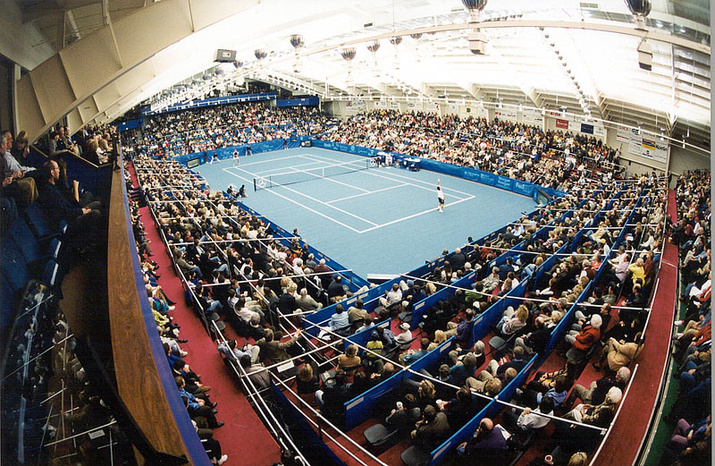Don't miss any stories → Follow Tennis View
FollowWhy Less Could Be More in Memphis
The US National Indoor Tennis Championships is one of the oldest tournaments in the world, having debuted in 1898. The tournament has been played at several locations over the decades, but it found its home in Memphis in 1976 and has stayed there ever since.
Until last year, Memphis was an ATP 500 event. It was a combined event with both men and women, and it offered more prize money and points for the winner than it does now. With a 32-player draw, this means that one main-draw win at the tournament was worth 45 points. Just two wins were worth 90 points and (in 2013) over $30,000 in prize money.

For all of its entertainment and the top Americans it drew, Memphis was often derided by many tennis fans for consistently being the weakest tournament in the ATP 500 series. If a tournament does not draw top competitors, then by definition it is easier for relatively weaker players to win. And, if a weaker player can win a tournament worth 500 points, it can inflate their ranking for the next 12 months.
This is entirely deserved under the current points system. Tournaments have a value and a set number of points based on the number of matches each player wins. However, this does not reflect the amount of difficulty involved in winning that tournament. Obviously, winning any tournament at this level takes incredible skill and work. No one is foolish enough to deny that. But we must also admit that beating opponents like Rafael Nadal or Novak Djokovic to win a tournament is more difficult than beating opponents outside the top 10.
This debate is often brought up with regard to the Queen’s Club ATP tournament in London, which often has more top players than a typical 500 series tournament. Queen’s Club, however, is only worth 250 points. Still, winning that tournament is much more difficult than winning in Memphis, for example, which has exactly three top-50 players competing this year.
This was the debate that often clouded Memphis. It was worth 500 points yet, outside of the top Americans, rarely drew the top players that a 500-level tournament should. Comparing its player lists to Rotterdam, the 500 tournament played in the same week, in recent years makes the reasons for this critique obvious. Memphis has been an incredible opportunity in recent years for players ranked in the 50s-70s to try and gain some serious points against 250-level competition. In 2010, for example, Yen-Hsun Lu received direct entry while being ranked No. 98 in the world. That’s usually unthinkable for a 500 such as Rotterdam.
This year, however, Memphis has been downgraded to a 250. The entry list has dropped off accordingly, but that might not be a bad thing. Memphis has been an entertaining if less prestigious event in recent years, and the criticism hasn’t helped it. Now that it has an entry list on par with other ATP 250s, and is worth 250 points, the conversation surrounding the event can focus on tennis again.










